#portrait painter
Text
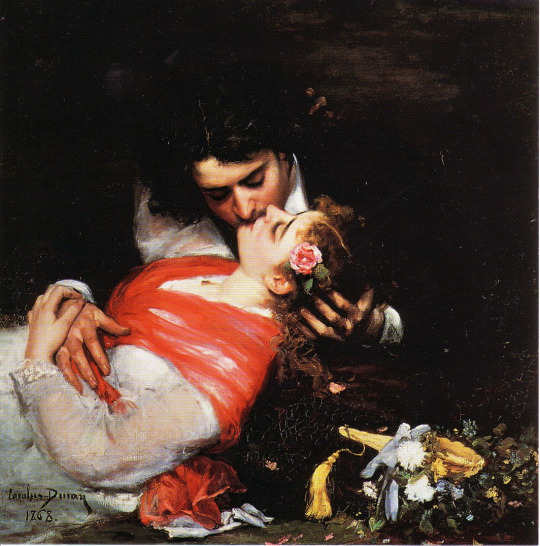
Carolus-Duran (French, 1837–1917) • Le Baiser (The Kiss), Self-portrait with his wife as newlyweds • 1868 • Palais des Beaux-Arts de Lille, Lille, France
#art#painting#fine art#art history#carolus duran#french artist#painter#1860s art#19th century european art#self portrait#double portrait#oil painting#portrait painter#valentine's day#pagan sphinx art blog#art blogs on tumblr#art lovers on tumblr
490 notes
·
View notes
Text
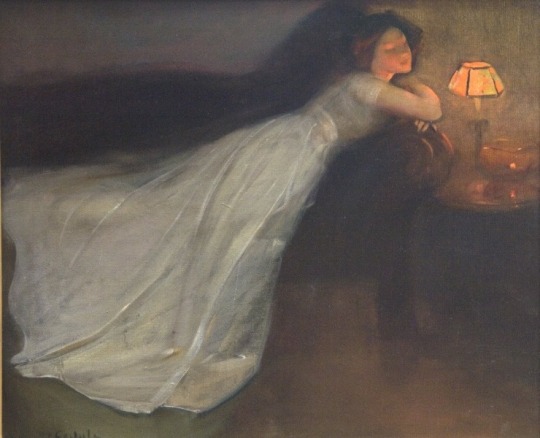
Florence Carlyle, The Moth, c. 1910
#florence carlyle#canadian artist#canadian painter#portrait painter#portrait artist#canadian art#canadian painting#women artists#woman painter#woman artist#aesthetic#moth#beauty#art on tumblr#modern art#art history#tumblr art#tumblrpic#tumblrpictures#tumblraesthetic#aesthetictumblr
476 notes
·
View notes
Text
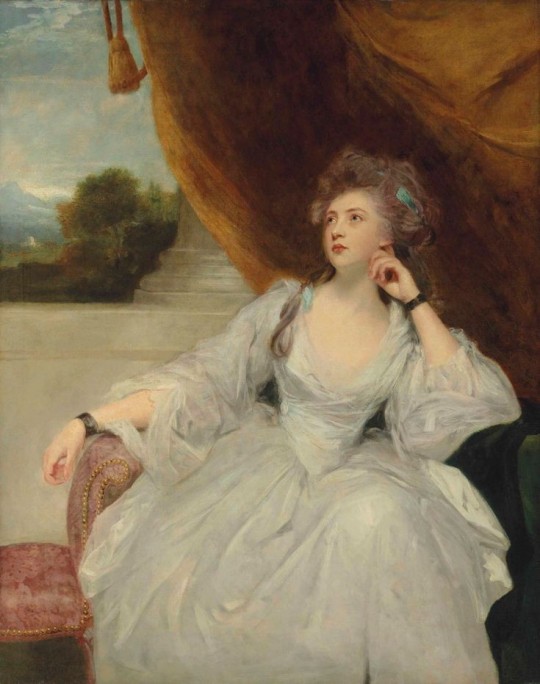
Joshua Reynolds (British, 1793-1792) • Portrait of Elizabeth Falconer as Contemplation • c. 1780
#art#painting#fine art#art history#18th century#joshua reynolds#18th century british art#rococo#“grand style”#portrait#female portrait#portrait painter#british portrait painter#oil painting#women in paintings#women in white#la robe blanche art blog#the white dress
98 notes
·
View notes
Text
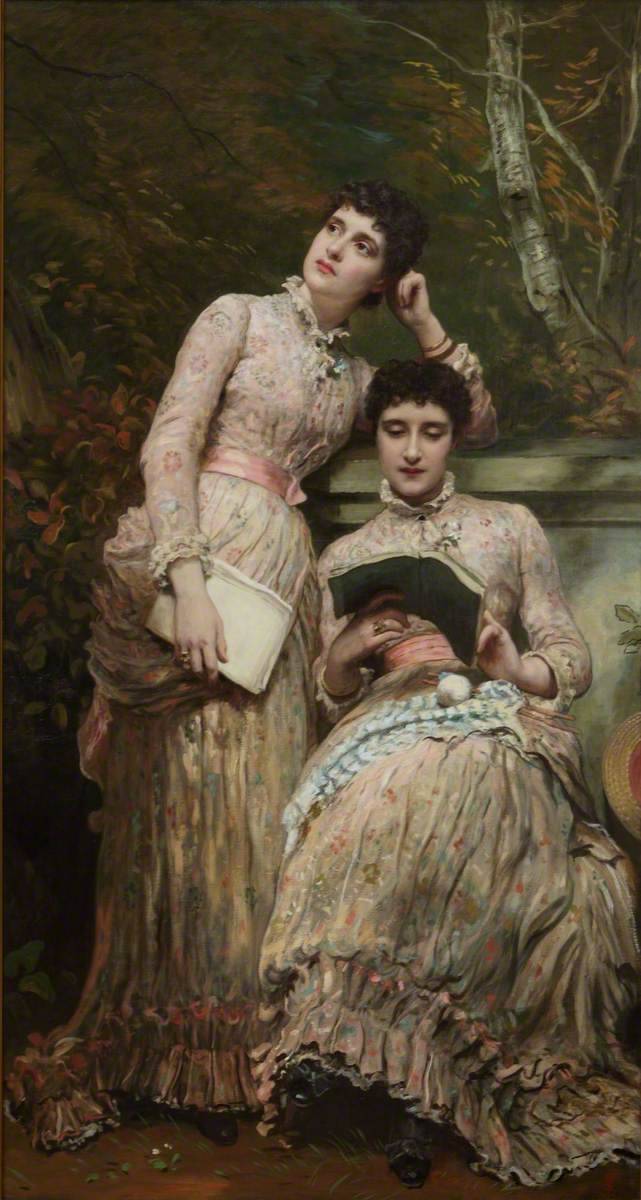
James Sant (1820 - 1916).
Ida (c.1863–1941), and Ethel (c.1863–1888), Twin Daughters of J. Searlight, Esq, 1884, Oil on Canvas.
#james sant#ida searlight#ethel searlight#twin sisters#twin daughters#oil on canvas#identical twins#19th century art#j. searlight esq#russell-cotes art gallery & museum#books#reading#british artist#british artists#english artists#english artist#royal academy#british painter#portrait painter#women#landscape painter#seascape painter#french impressionism#mannerist art#visionary art#painter of the wish tower
78 notes
·
View notes
Text

Pop Culture Meets Strange Familiarity – The Surreal Art Of Tim O’Brien
Tim O’Brien, an artist, illustrator, and portrait painter, has garnered attention for his striking illustrations that blend pop culture with surrealism. He has contributed his work to publications such as TIME Magazine, The Nation, and Bloomberg Businessweek, among many others.

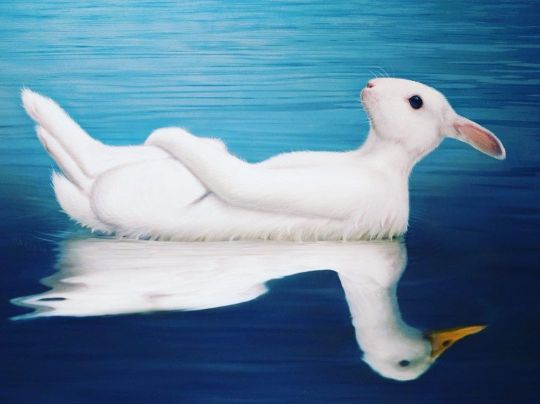

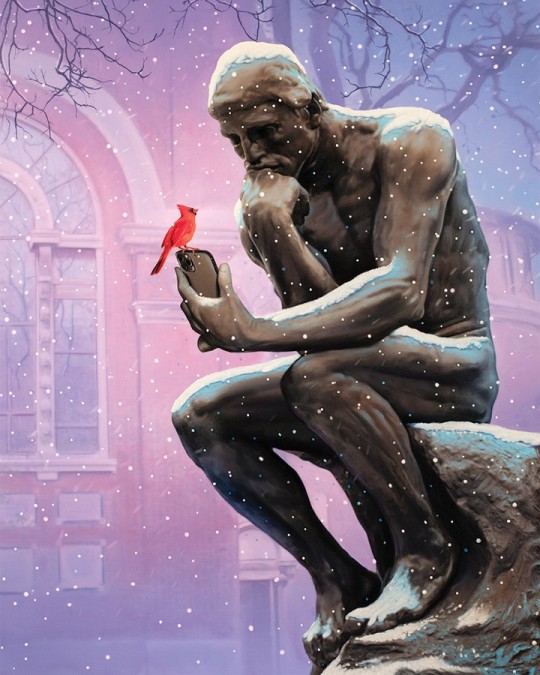

2 notes
·
View notes
Photo
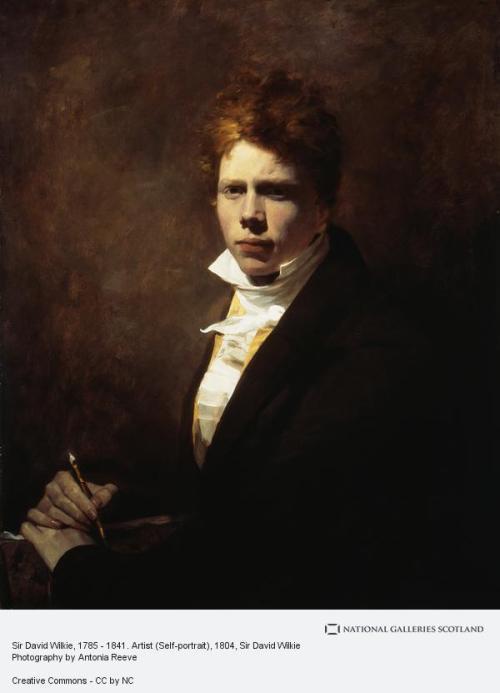


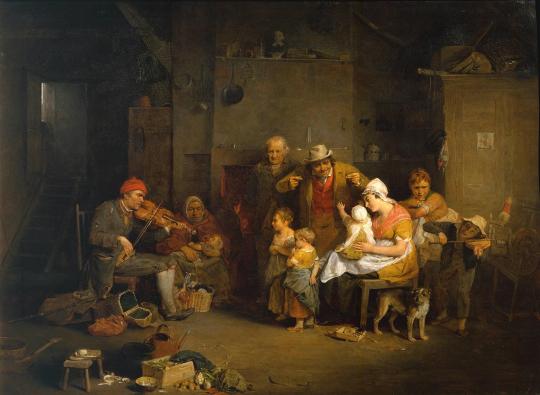


On November 18th 1785 Sir David Wilkie, the Scottish painter, was born.
Son of the minister in the parish of Cults in Fife, Wilkie’s talent was precocious: the self-portrait above was painted when he was only 20, and indeed by the early age of 19 he had produced one of his most famous works, ‘Pitlessie Fair’. He sketched the faces of his Fife neighbours during church services to use in this work, and the accuracy of detail of real-life characters was a trait for which Wilkie was renowned.
He became one of the most sought-after society portrait painters of his day. His detailed paintings of events mean that his pictures are often used for historic illustrations, most notably his painting of John Knox preaching in the pulpit.My fave by Wilkie is The Blind Fiddler, seen in the second pic, there seems so much going on the painting.
In 1840, for health reasons, he took a tour of Egypt and the Holy Land, but sadly died on the voyage home.
Wilkie’s paintings can be seen in The National Galleries of Scotland, the first are of the artist himself, then The Blind Fiddler, Pitlessie Fair and The burying of the Scottish Regalia.
9 notes
·
View notes
Photo
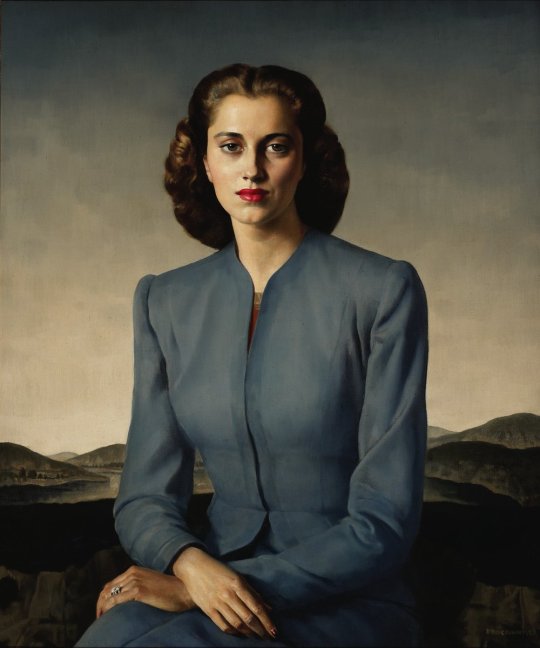
A prima
“Segundo a minha própria mãe contava, dizia que deixaria tudo por Lourenço, bastava ele fazer um sinal.”
Manuel Alegre, “Alma”; pintura de Gerald Leslie Brockhurst.
22 notes
·
View notes
Photo

Auguste Toulmouche, 1872: “Idle thoughts”
#Auguste Toulmouche#idle thoughts#1872#art#art details#art history#french#french art#french artist#portrait artist#portrait painter#french women art#french women#french painter#19th century#19th century art#20th century#20th century art#luxury art#royalty#royalty aesthetic
18 notes
·
View notes
Video
Maria Zaikina, Kajsa, 2022 von Maria Zaikina
9 notes
·
View notes
Text
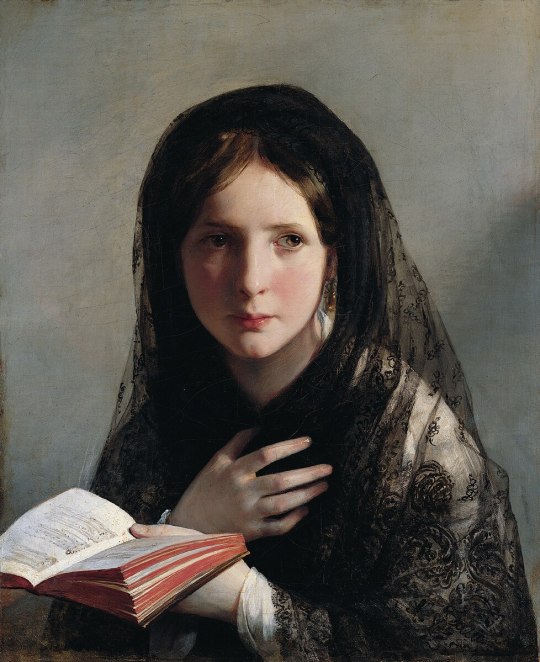
Friedrich von Amerling (Austro-Hungarian, 1803–1887) • Lost in Dreams • 1835 • Liechtenstein Museum, Vienna, Austria
#art#painting#fine art#art history#friedrich von amerling#austrian artist#hungarian artist#oil painting#unknown portrait#portrait#female portrait#portraitist#portrait painter#pagan sphinx art blog#art blogs on tumblr#art lovers on tumblr#art & beauty
220 notes
·
View notes
Text
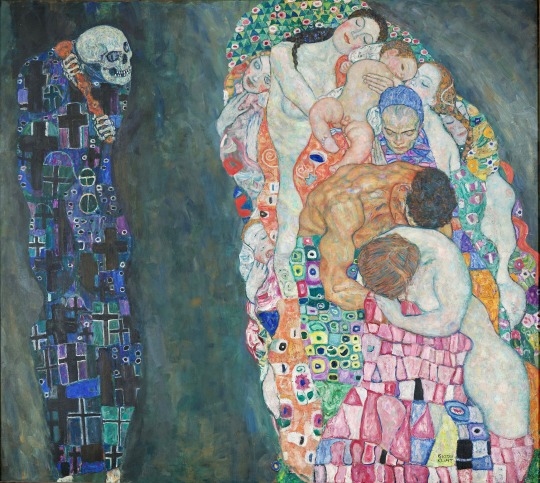
Gustav Klimt
Death and Life (Tod und Leben)
1908-1915
#gustav klimt#austrian art#austrian artist#austrian painter#austrian painting#art nouveau#death#life#beauty#aesthetic#portrait painter#secessionist#modern art#art history#aesthetictumblr#tumblraesthetic#tumblrpic#tumblrpictures#tumblr art#tumblrstyle#artists on tumblr#death and life#life and death
111 notes
·
View notes
Text

Jacques-Émile Blanche (French, 1861–1942) • Portrait of the novelist Colette • 1905 • Museu Nacional d'Art de Catalunya, Barcelona
#art#painting#women in white#fine art#portrait#art history#famous female portrait#female portrait#oil painting#jacques émile blanche#french artist#artwork#painter#portrait painter#early 20th century european art#pagan sphinx photography#colette#art blogs on tumblr
74 notes
·
View notes
Photo




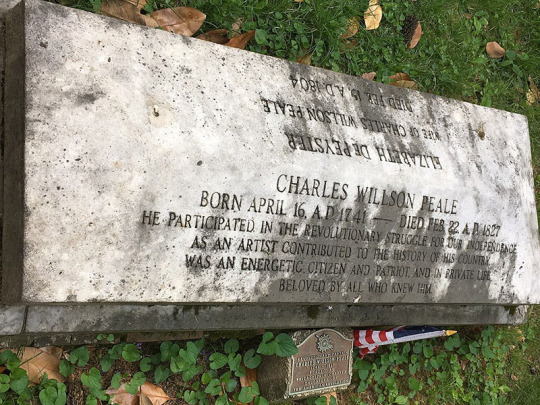
Charles Willson Peale – Scientist of the Day
Charles Willson Peale was an early American portrait painter, founder of the first natural history museum in the country, and the man who unearthed and mounted the first mastodon skeleton in the world, which he exhibited in his museum.
read more...
#Charles Willson Peale#museums#portrait painter#natural history#histsci#histSTM#18th century#19th century#history of science#Ashworth#Scientist of the Day
13 notes
·
View notes
Text

The Magdalen Reading, 1535. - Ambrosius Benson (1495/1500- 1550).
A woman, her hair covered by an elaborate structure of caps and semi-transparent veils, holds a luxurious illuminated book in a green velvet binding. The pot identifies her as Mary Magdalene: it holds the ointment with which the saint anointed Christ’s feet.
The hands and book are copied from Saint Barbara in Gerard David’s The Virgin and Child with Saints and Donor. They are so close that it seems Ambrosius Benson copied from the original or that he had access to the preliminary drawings. He was a pupil of David, and the two were involved in a lawsuit about patterns which David alleged he had found in Benson’s chest. The folds of the veil are extremely close to Mary Magdalene’s headdress in The Magdalen in a Landscape by Albert Cornelis, from whom Benson borrowed patterns.
Benson specialised in half-lengths of young women depicted as Mary Magdalene or as sibyls (female oracles in classical mythology). This lady’s strangely elongated ear and large hands are typical of the artist. The style of her dress suggests a date of about 1520, making it one of the artist’s earliest such pictures. - The National Gallery.
His original name was likely Benzone or Bensoni, or a variation.
Ambrosius Benson (c. 1495/1500, in Ferrara or Milan – 1550, in Flanders) was an Italian painter who became a part of the Northern Renaissance.
While many surviving paintings have been attributed, there is very little known of him from records, and he tended not to sign his work. He is believed to be responsible for mainly religious art, but also painted portraits on commission. He sometime painted from classical sources, often setting the figures in modern-dress, or a contemporary domestic setting. In his lifetime he was successful; he had a large workshop, his work was sold internationally and he was especially popular in Spain.
Benson became popular as a source for pastiche with 19th-century painters, who are sometimes known as the "followers of Benson". In particular his many variations of the Magdalen and Sibilla Persica were further copied and became popular with contemporary buyers. - Wikipedia.
#magdalen#reading#15th century art#ambrosius benson#mary magdalene#gerard david#albert cornelis#religious painting#religious art#oil on oak#the national gallery#illuminated book#saint mary magdalene#italian painter#italian painters#italian artist#italian artists#northern renaissance#portrait painter#portrait painters#pastiche
13 notes
·
View notes
Text
al things considered — when i post my masterpiece #1135
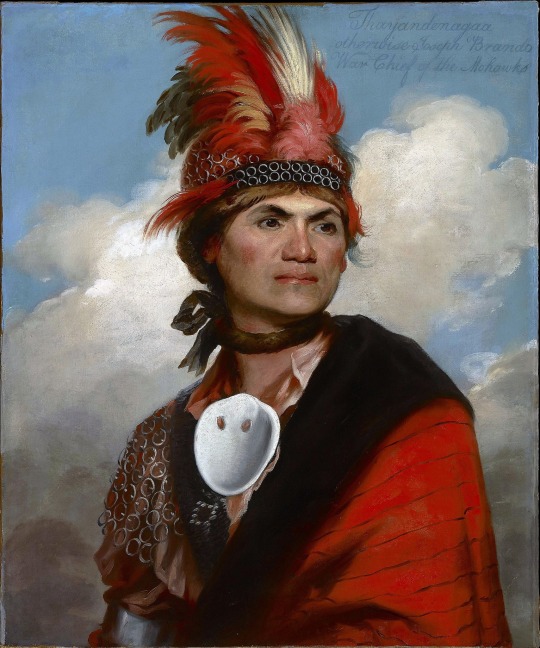
first posted in facebook november 18, 2022
gilbert stuart -- "thayendanegea" (1785)
"what a business is this of a portrait painter! you bring him a potato and expect he will paint you a peach" ... gilbert stuart
"you consider yourselves as independent people; we, as the original inhabitants of this country, and sovereigns of the soil, look upon ourselves as equally independent, and free as any other nation or nations" ... thayendanegea (warning president washington's secretary of war)
"paint what you see and look with your own eyes" ... gilbert stuart
"what a business is this for american history! you bring it a nation and they portray it as a potato" ... al janik
#gilbert stuart#thayendanegea#portrait painter#potato#peach#original inhabitants#independent people#american history#al things considered
3 notes
·
View notes
Text
Great paintings of the past - Vermeer's The Geographer
#vermeer#geographer#astronomer#dutch painting#classical art#classical painting#realism#portrait#portrait painter
4 notes
·
View notes